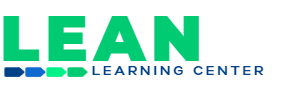Lean – What Is the ROI?
“What is the return on investment for lean?” This question is asked frequently in our Lean Experience and Leading Lean sessions. It’s a fair question. This week I had a chance to see a great example of the ROI of lean.
A little background – the company I visited this week is not a big corporation with deep pockets. It is a growing company in a competitive sector, committed to aggressive growth goals and investment returns while developing a high performance organization. Lean is the improvement process leadership committed to a year ago. Earlier this year the company started a new product line that would expand their portfolio and potentially add customers.
If you received a proposal that would double throughput and eliminate overtime would you approve it? Your question would likely be “What is it going to cost to do this?” If the investment amounted to work done during downtime, a three-day training class plus travel and use of repurposed materials and scrap would this meet your approval criteria? I believe your answer would be “yes!”
Let me introduce you to Steve. Steve is the supervisor of the sub-assembly team for the new product line mentioned earlier. He became supervisor of the operation earlier this year. He and his team are committed to pleasing the customer, delivering safe productive work, and working together well as a team.
Mark is the manager of the plant assembling the new product. Mark spent some time telling Steve about a case he studied in Leading Lean, “Learning to Lead at Toyota,” by Steven Spear. Mark was very energized by the culture of small improvements and experiments that are the foundation of Toyota’s success. Mark didn’t wait for Steve to go to a training class. He didn’t enlist an engineer who had studied lean. He simply took some time to personally teach Steve some powerful components of lean in simple terms. He then challenged Steve and his team to identify improvement ideas, test them, and report the results using lean basics.
Steve showed me 7 improvements. Two preparation workstations were designed and implemented to solve an assembly bottleneck. One improvement reduced time required to changeover from one model to another with shaft modifications. Three improvements simplified material flow to the line reducing operator walking and waiting for material handling. All improvements were made from repurposed materials and carts. At some point in the future the work stations may need upgrade to factory standard.
INVESTMENT
- Plant Leader – time to teach, challenge, and recognize
- Team Leader – open mind, participation, interest to engage the team
- Team – open mind, participation, pride in a job well done
- Money – downtime hours to get the work done, price of paint, duct tape
- Measure – baseline data before and after
RETURN
- Number of assemblies per hour before = 10
- Number of assemblies per hour yesterday = 27
- Potential cost improvement = a lot
The “Power of the Smalls” provide cumulative impact. This is the return on investment in lean.
Lean Learning Center
The Lean Learning Center was founded in 2001 to address the gaps and barriers that are holding back companies from successful and sustainable lean transformation. In addition to the advanced curriculum, the Center has developed a learning environment designed specifically for adult learning utilizing techniques that include discovery simulations, case studies, personal planning, and reflection – ultimately engaging people at a deep and personal level. We bring our unique lean understanding in creative ways to executives, managers, supervisors, change agents and front-line employees.





